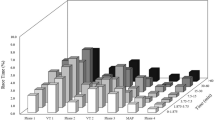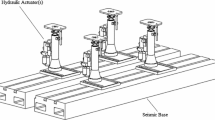Abstract
Virtual cycling engagement has seen a significant increase in the last decade, with a recognizable surge in 2020 due to the pandemic. To ensure a fair competition field, a testing apparatus was designed to test direct-drive bicycle smart trainers from various manufacturers. Smart trainers were tested for error on two main metrics: power measurement error and resistance error. Given that the integrity of virtual racing relies upon accurate power readings sent from the smart trainer to a cloud-based competition software, discrepancies in these metrics are most likely to affect the outcome of an event. The testing apparatus used a motor in place of a human rider to control the repeatability and capability of the testing system. Power measurements consisting of a torque and rotational velocity sensor were connected to the motor output to determine the precise power delivered to a smart trainer. The known input power was compared to the power reported by the smart trainer as transmitted over the ANT+ wireless protocol and compared across the testing metrics. An electromagnetic brake system was incorporated to characterize the transmission losses from the motor to the smart trainer, enabling the accurate determination of the actual power input into the smart trainers. The testing procedure covered each virtual gradient ranging from − 8 to 15% at every power level between 100 and 800 watts. The power reading error of smart trainers ranged from \(\approx\) 0 to > 16%, and the resistance error ranged from < 1% to over 100%. These large errors show how critical the homologation of smart trainers is for fair competition.












Similar content being viewed by others
References
Pender K (2020) Virtual reality: how cyclists are pedalling through the pandemic. https://www.theguardian.com/sport/2020/dec/18/virtual-reality-how-cyclists-are-pedalling-through-the-pandemic
Reed R (2021) Do you even Zwift? The indoor cycling platform is having a moment. https://www.forbes.com/sites/robreed/2021/02/17/do-you-even-zwift-the-indoor-cycling-platform-is-having-a-moment/?sh=8053bca3f860
Tom Dumoulin: Virtual cycling it’s nowhere near the real thing. http://cycling.today/tom-dumoulin-virtual-cycling-its-nowhere-near-the-real-thing/
Rojas-Valverde D, Córdoba-Blanco JM, González-Salazar L (2022) Cyclists or avatars: is virtual cycling filling a short-term void during COVID-19 lockdown? Manag Sport Leis 27(1–2):158–162. https://doi.org/10.1080/23750472.2021.1879665
McIlroy B, Passfield L, Holmberg HC, Sperlich B (2021) Virtual training of endurance cycling—a summary of strengths, weaknesses, opportunities and threats. Front Sports Active Living 3(March):1–7. https://doi.org/10.3389/fspor.2021.631101
Wilmore J, Constable S, Stanforth P, Buono M, Tsao Y, Lowdon B, RATLIFF RJ, FREDERICK RONALD (1982) Mechanical and physiological calibration of four cycle ergometers. Med Sci Sports Exerc 14(4):322
Russell JC, Dale JD (1986) Dynamic torquemeter calibration of bicycle ergometers. J Appl Physiol 61(3):1217–1220. https://doi.org/10.1152/jappl.1986.61.3.1217
Woods GF, Day L, Withers RT, Ilsley AH, Maxwell BF (1994) The dynamic calibration of cycle ergometers. Int J Sports Med 15(4):168–171. https://doi.org/10.1055/s-2007-1021041
Maxwell BF, Withers RT, Ilsley AH, Wakim MJ, Woods GF, Day L (1998) Dynamic calibration of mechanically, air- and electromagnetically braked cycle ergometers. Eur J Appl Physiol Occup Physiol 78(4):346–352. https://doi.org/10.1007/s004210050430
Gardner AS, Stephens S, Martin DT, Lawton E, Lee H, Jenkins D (2004) Accuracy of SRM and power tap power monitoring systems for bicycling. Med Sci Sports Exerc 36(7):1252–1258. https://doi.org/10.1249/01.MSS.0000132380.21785.03
Abbiss C, Quod M, Levin G, Martin D, Laursen P (2009) Accuracy of the Velotron ergometer and SRM power meter. Int J Sports Med 30(02):107–112. https://doi.org/10.1055/s-0028-1103285
Zadow EK, Kitic CM, Wu SS, Smith ST, Fell JW (2016) Validity of power settings of the Wahoo KICKR power trainer. Int J Sports Physiol Perform 11(8):1115–1117. https://doi.org/10.1123/ijspp.2015-0733
Hoon MW, Michael SW, Patton RL, Chapman PG, Areta JL (2016) A comparison of the accuracy and reliability of the Wahoo KICKR and SRM power meter. J Sci Cycl 5(3):11–15
Drouet JM, Champoux Y, Bergeron F (2008) A user-friendly calibration system for bicycle ergometers, home trainers and bicycle power monitoring devices. Sports Eng 11(1):15–22. https://doi.org/10.1007/s12283-008-0003-2
Wainwright B, Cooke CB, O’Hara JP (2017) The validity and reliability of a sample of 10 Wattbike cycle ergometers. J Sports Sci 35(14):1451–1458. https://doi.org/10.1080/02640414.2016.1215495
Bouillod A, Soto-Romero G, Grappe F, Bertucci W, Brunet E, Cassirame J (2022) Caveats and recommendations to assess the validity and reliability of cycling power meters: a systematic scoping review. Sensors 22(1):386. https://doi.org/10.3390/s22010386
Dowd T, Miller J, Heflin D, Mansson JA, Sweldens W (2020). Bicycle Trainer Homologation Apparatus. U.S. Provisional Patent Application No. 63/122,449
Hollingworth NE, Hills DA (1986) Theoretical efficiency of a cranked link chain drive. Proc Inst Mech Eng Part C J Mech Eng Sci 200(5):375–377. https://doi.org/10.1243/PIME_PROC_1986_200_141_02
Lodge CJ (2000) Experimental measurements of roller chain transmission efficiency. In: Proceedings of the international conference on gearing, transmissions, and mechanical systems, pp 603–612
Lodge CJ, Burgess SC (2002) A model of the tension and transmission efficiency of a bush roller chain. Proc Inst Mech Eng Part C J Mech Eng Sci 216(4):385–394. https://doi.org/10.1243/0954406021525179
Burgess SC (1999) Improving cycling performance with large sprockets. Sports Eng 1(2):107–113. https://doi.org/10.1046/j.1460-2687.1999.00012.x
Burgess S, Lodge C (2004) Optimisation of the chain drive system on sports motorcycles. Sports Eng 7(2):65–73. https://doi.org/10.1007/BF02915918
Spicer JB, Richardson CJK, Ehrlich MJ, Bernstein JR, Fukuda M, Terada M (2001) Effects of frictional loss on bicycle chain drive efficiency. J Mech Des 123(4):598–605. https://doi.org/10.1115/1.1412848
G. Canada (2022) ANT+ device profile fitness equipment. www.thisisant.com
Zwift Power (2023). https://zwiftpower.com/
Acknowledgements
The smart trainer apparatus team would like to thank the Ray Ewry Sports Engineering Center at Purdue University for financial support on this project. We would also like thank the contributions made by student researchers Patrick Cavanaugh and Eleanor Dyas, in addition to the valuable input from Wim Sweldens during the conception of the project.
Author information
Authors and Affiliations
Corresponding author
Ethics declarations
Conflict of interest
Dr. Jan-Anders Mansson served as a guest editor for the Topical Collection on The Engineering of Sport 14, but was not involved in the blind peer review process of this work.
Additional information
Publisher's Note
Springer Nature remains neutral with regard to jurisdictional claims in published maps and institutional affiliations.
Rights and permissions
Springer Nature or its licensor (e.g. a society or other partner) holds exclusive rights to this article under a publishing agreement with the author(s) or other rightsholder(s); author self-archiving of the accepted manuscript version of this article is solely governed by the terms of such publishing agreement and applicable law.
About this article
Cite this article
Dowd, T., Heflin, D., Miller, J. et al. Apparatus and methodology for smart trainer homologation analysis. Sports Eng 27, 6 (2024). https://doi.org/10.1007/s12283-023-00447-z
Accepted:
Published:
DOI: https://doi.org/10.1007/s12283-023-00447-z




